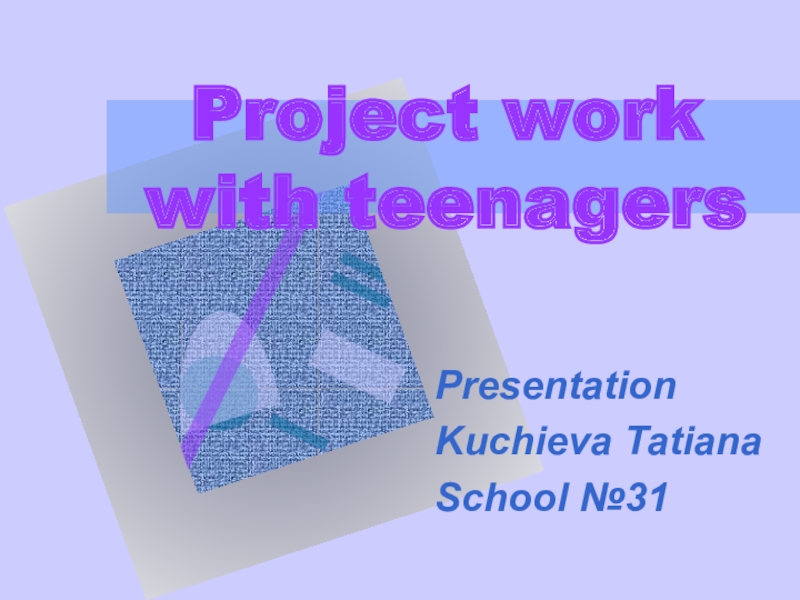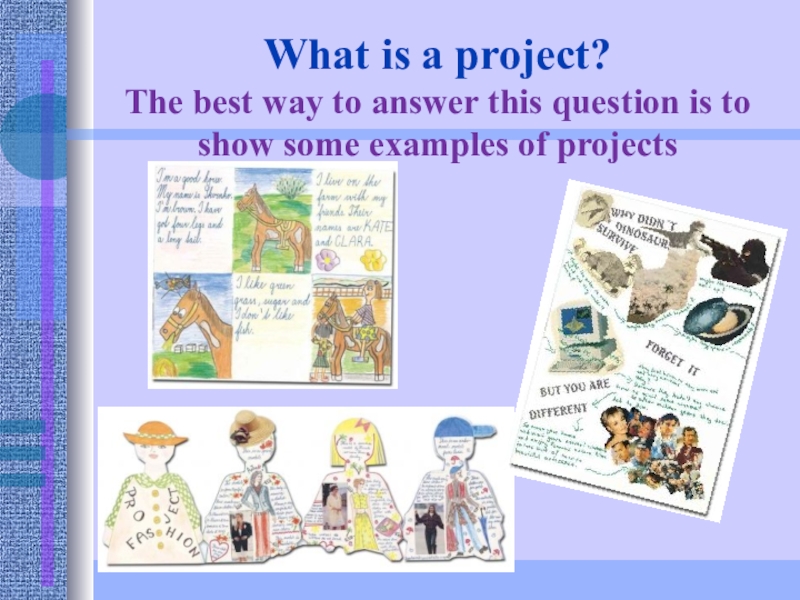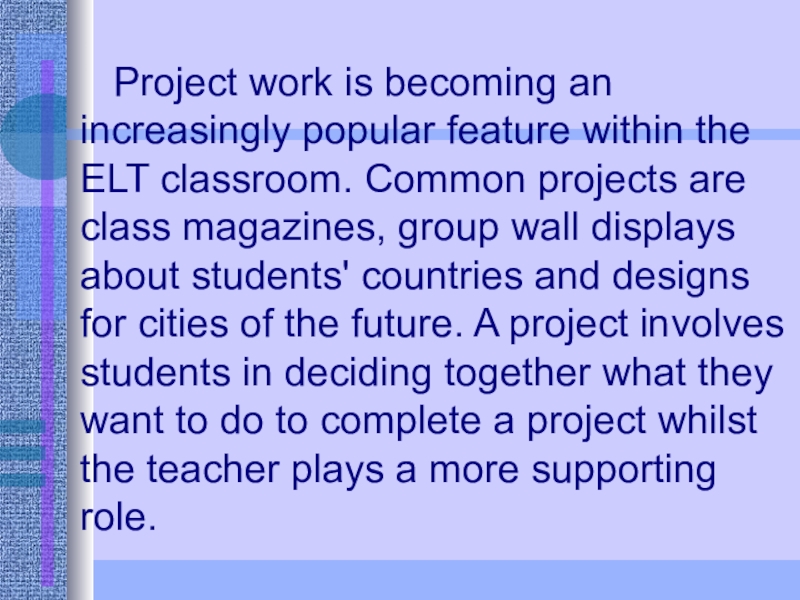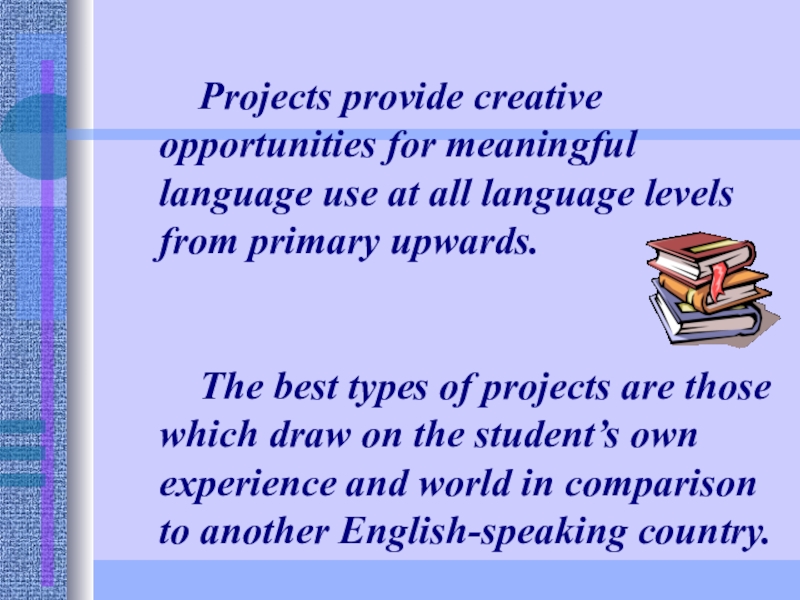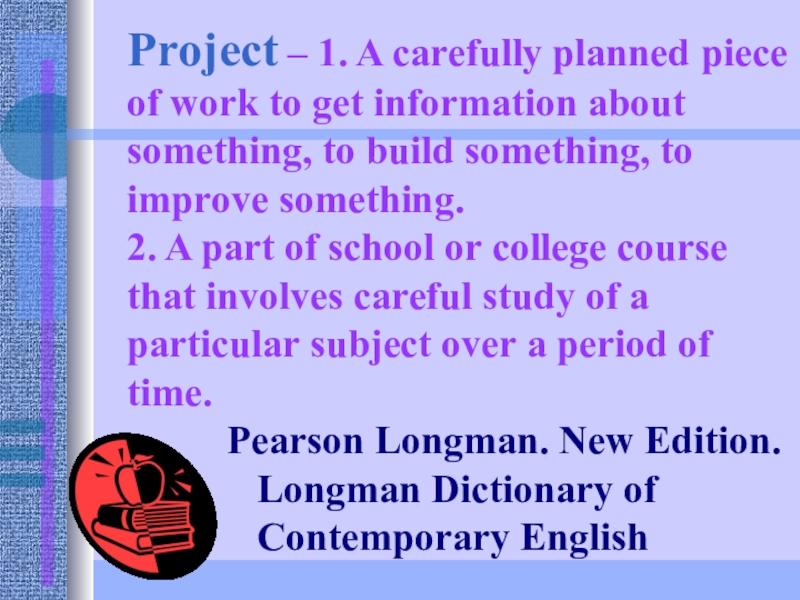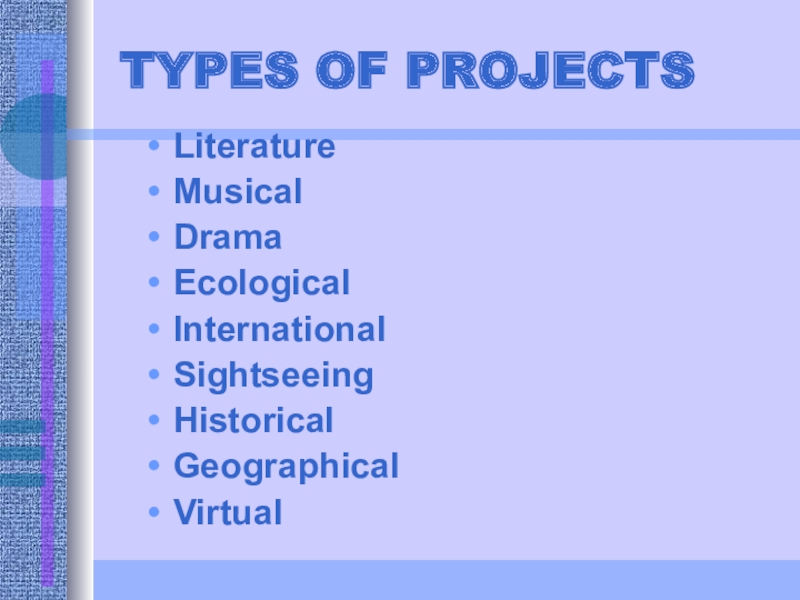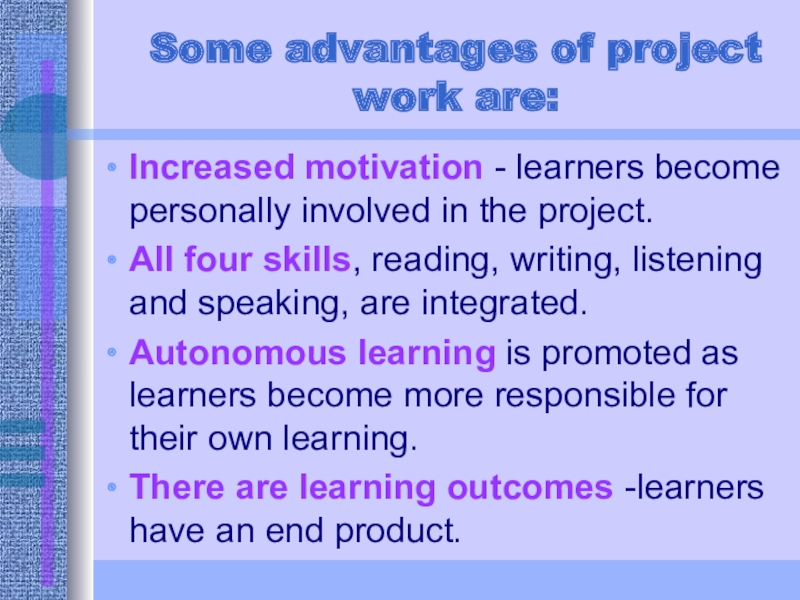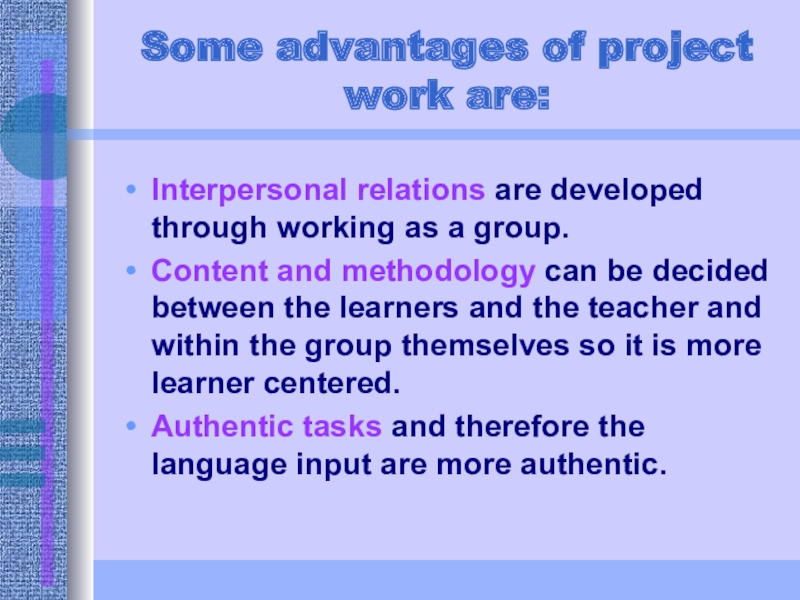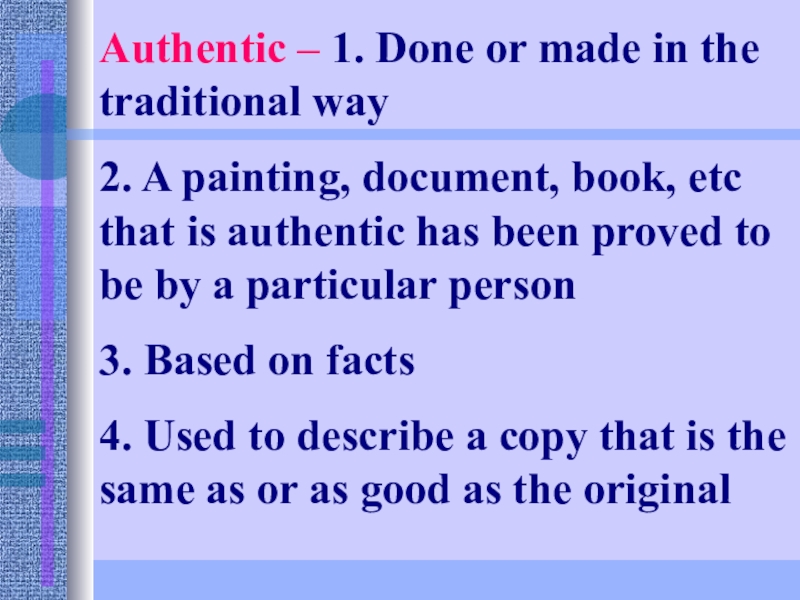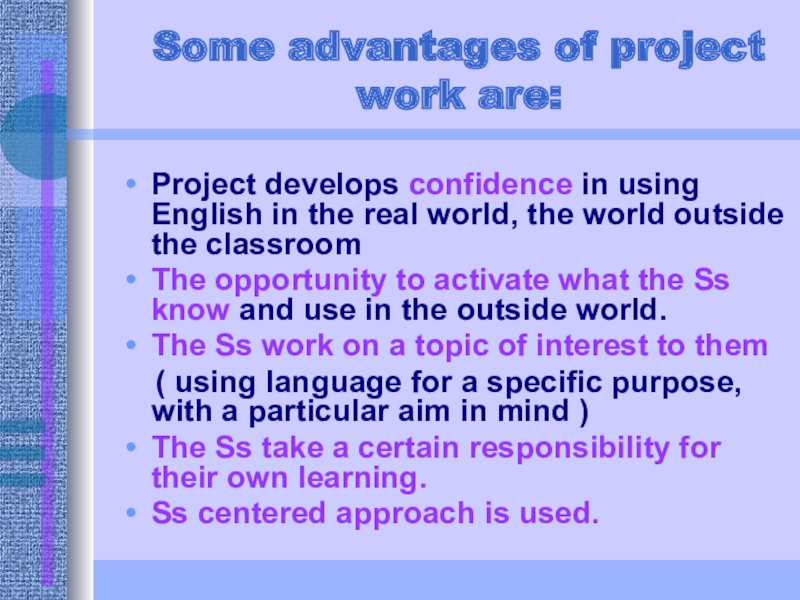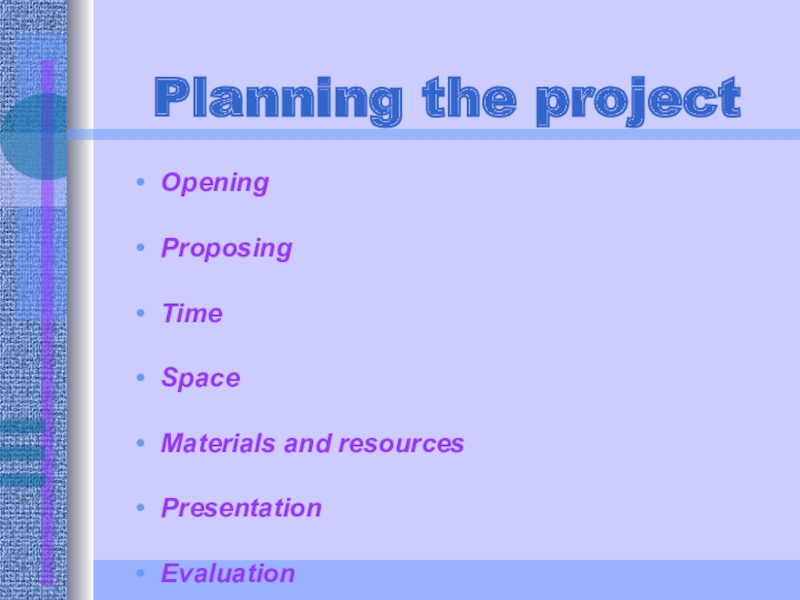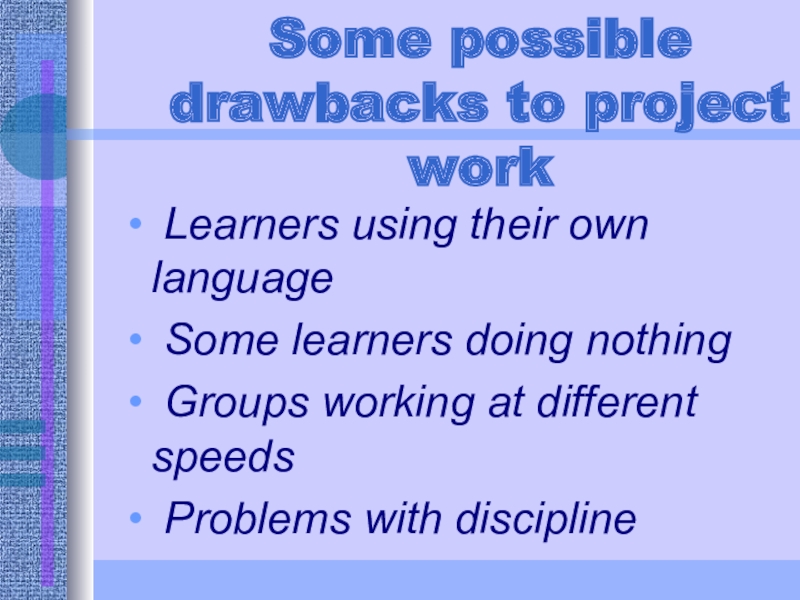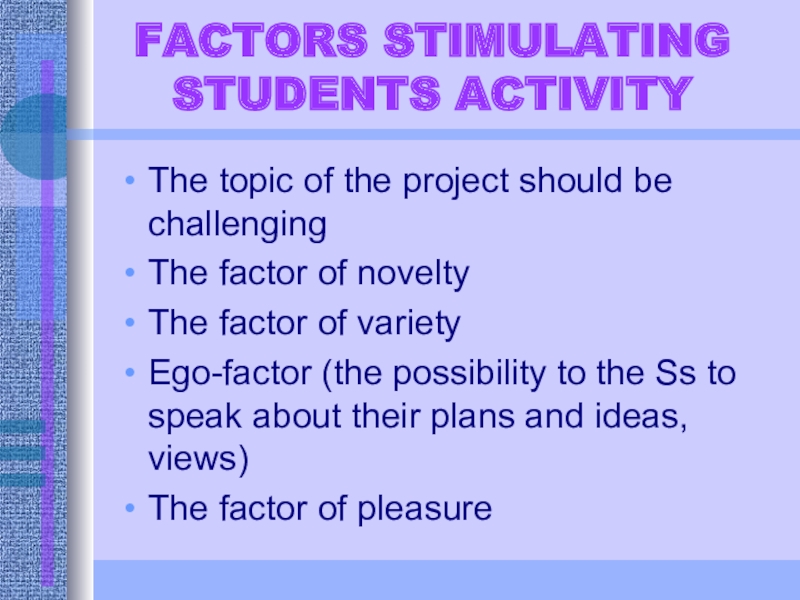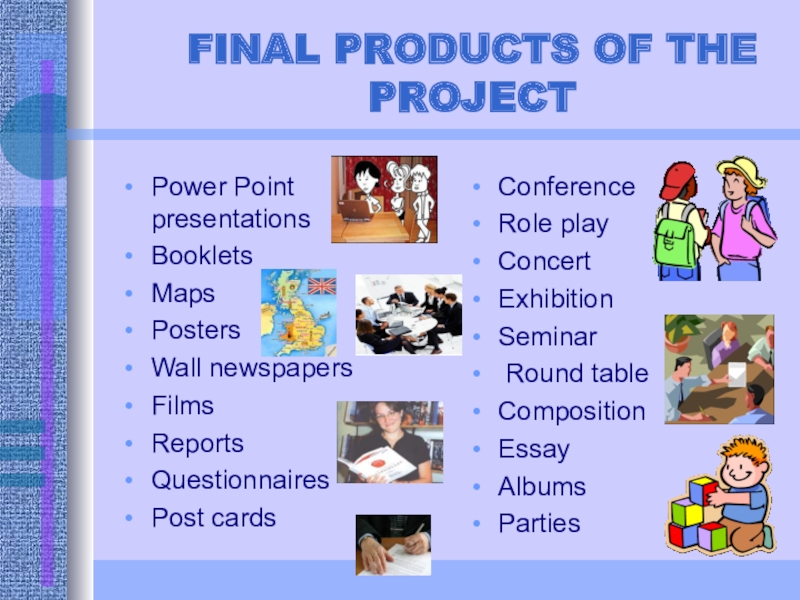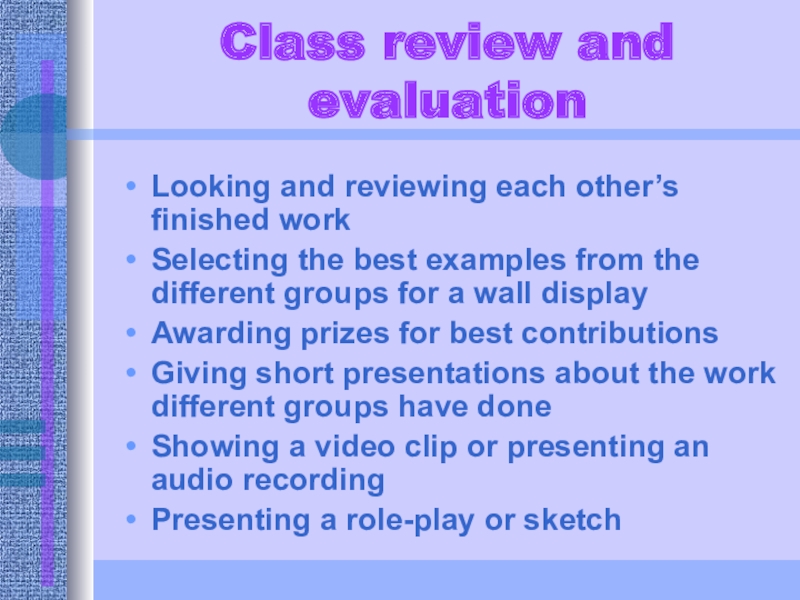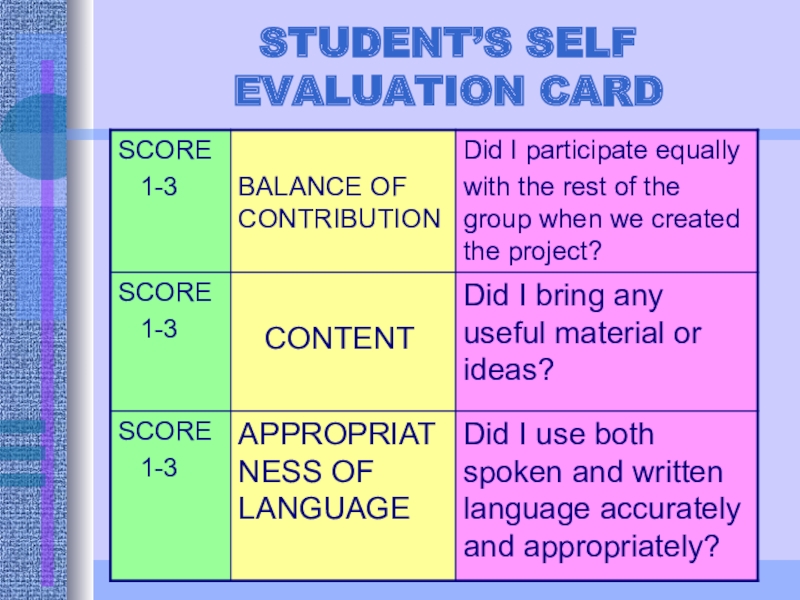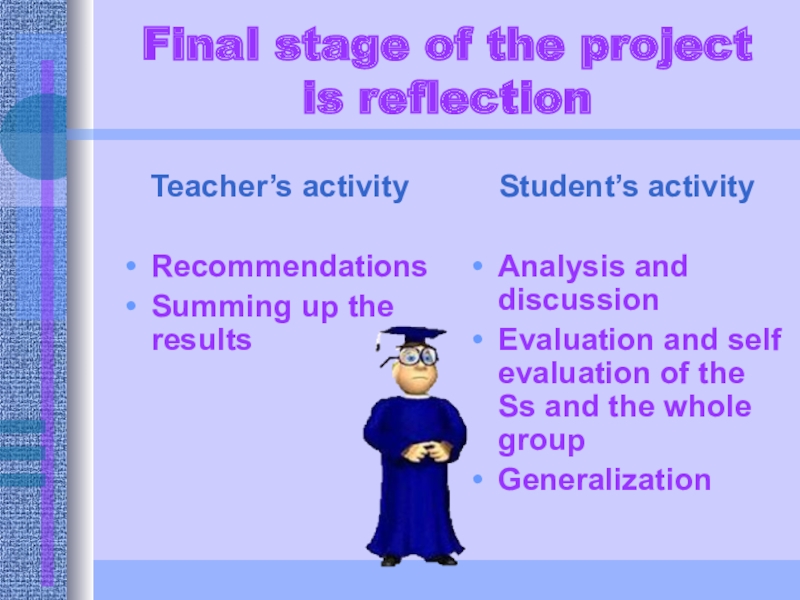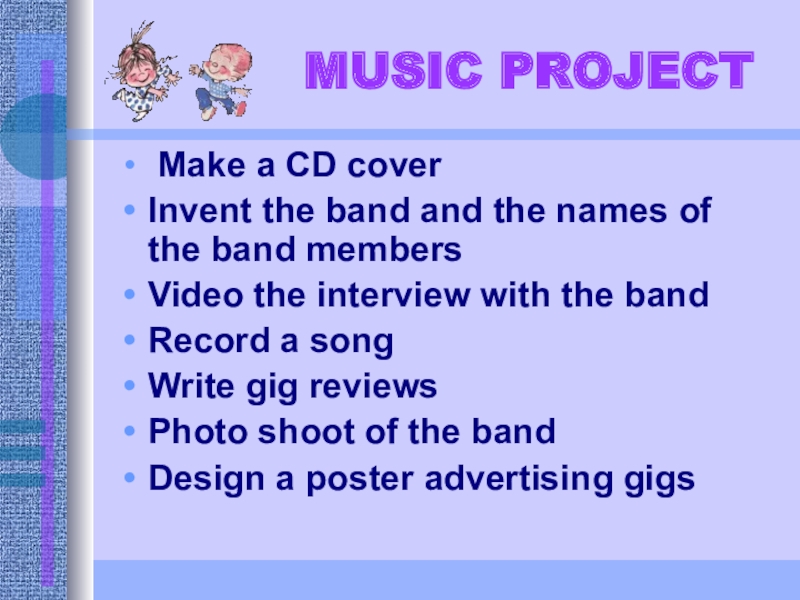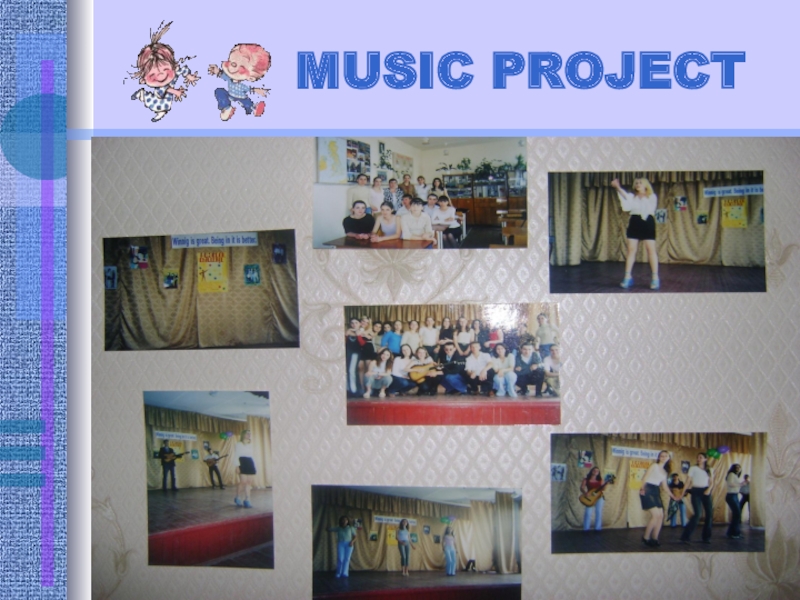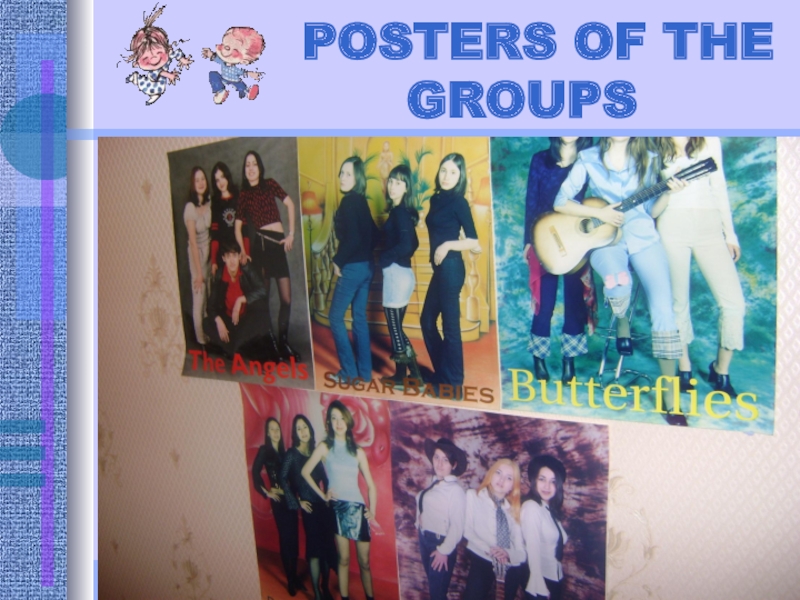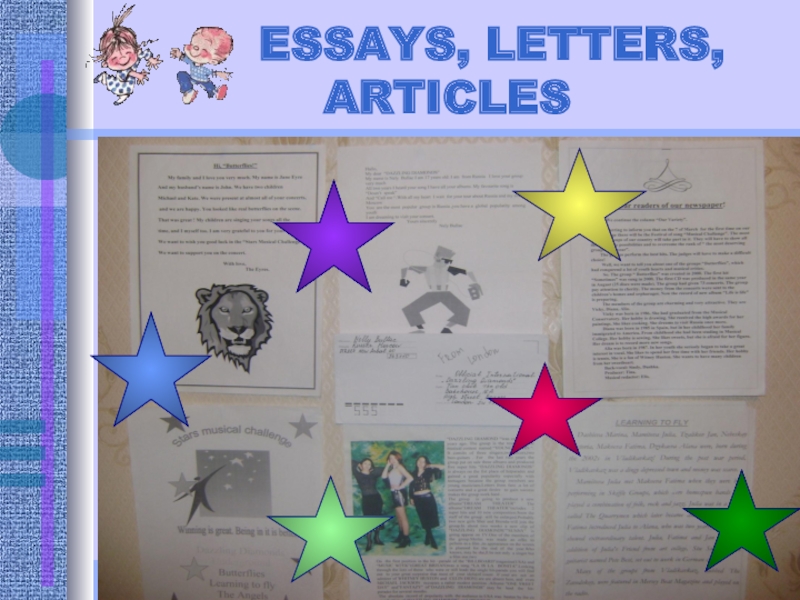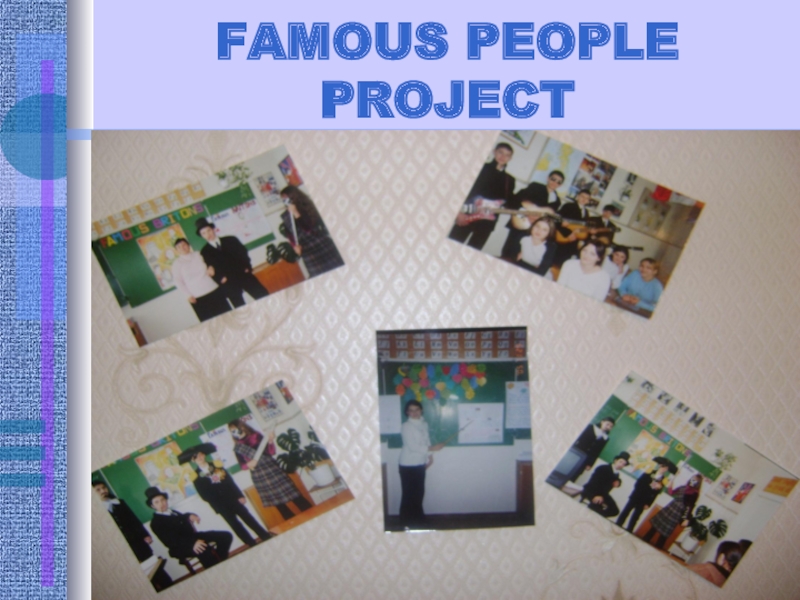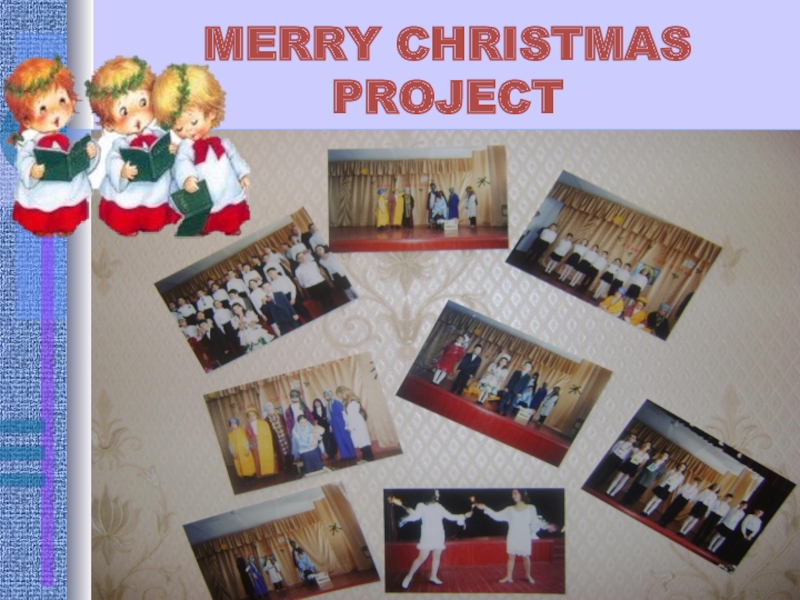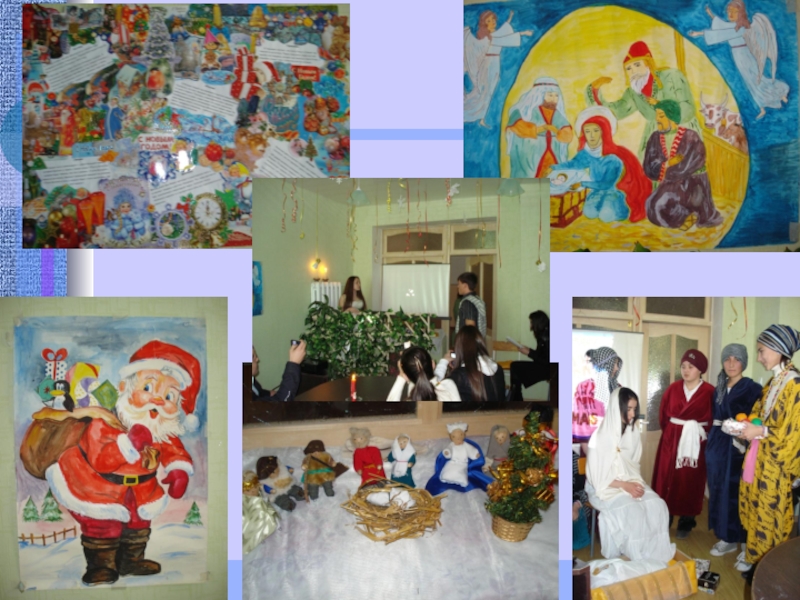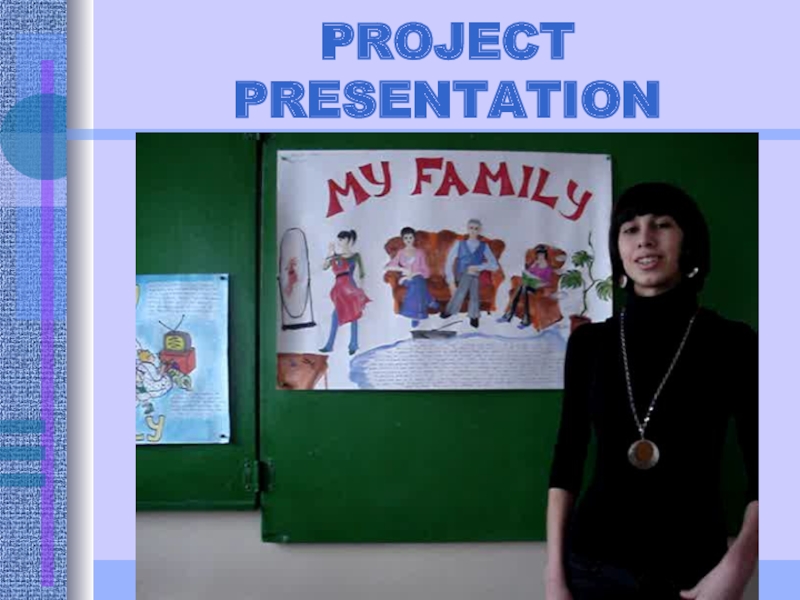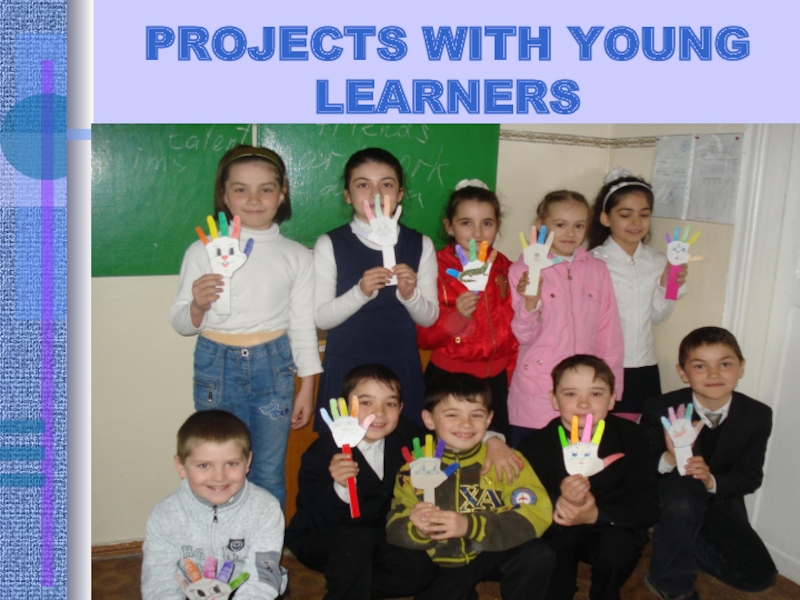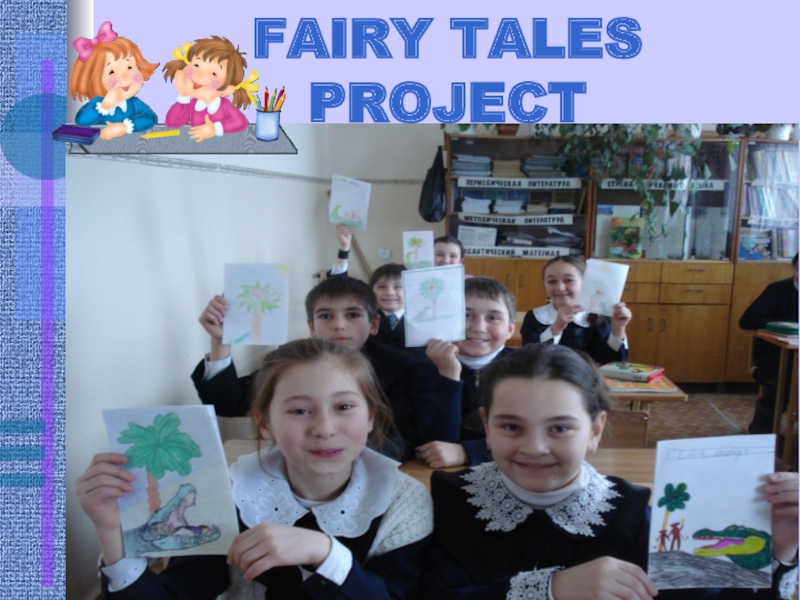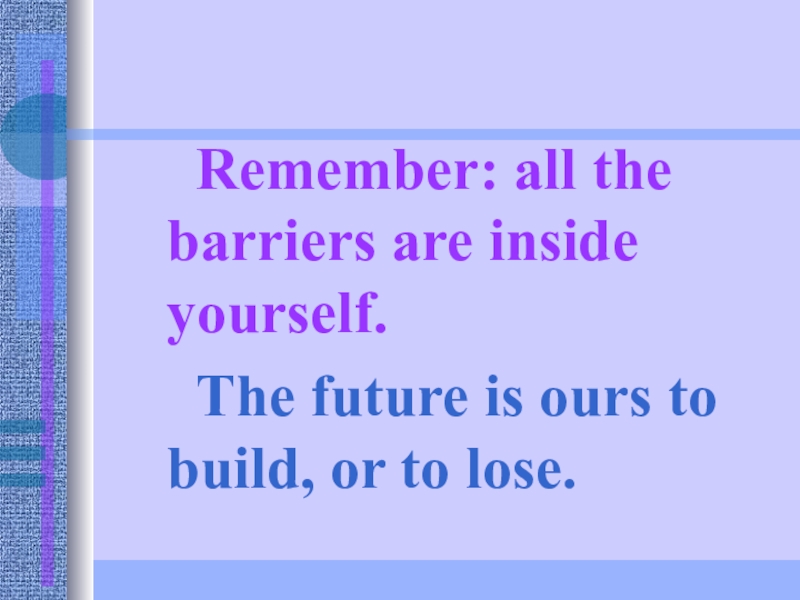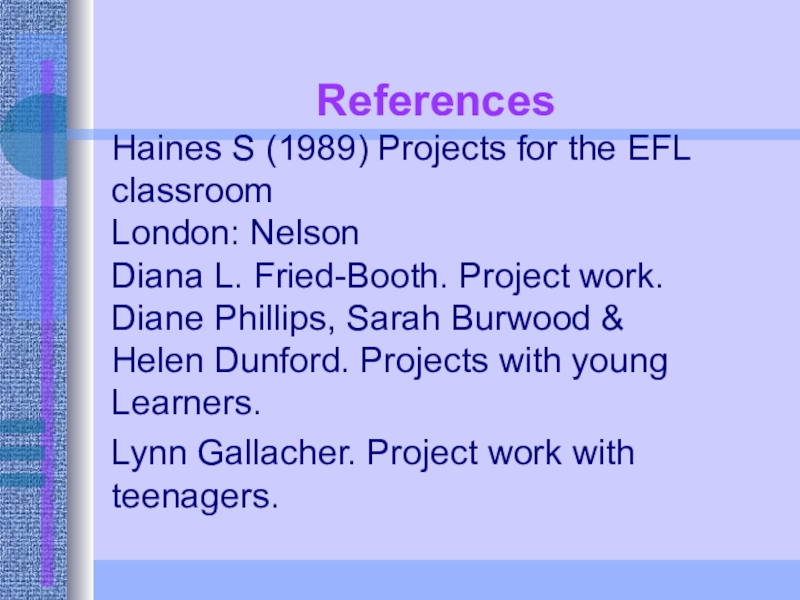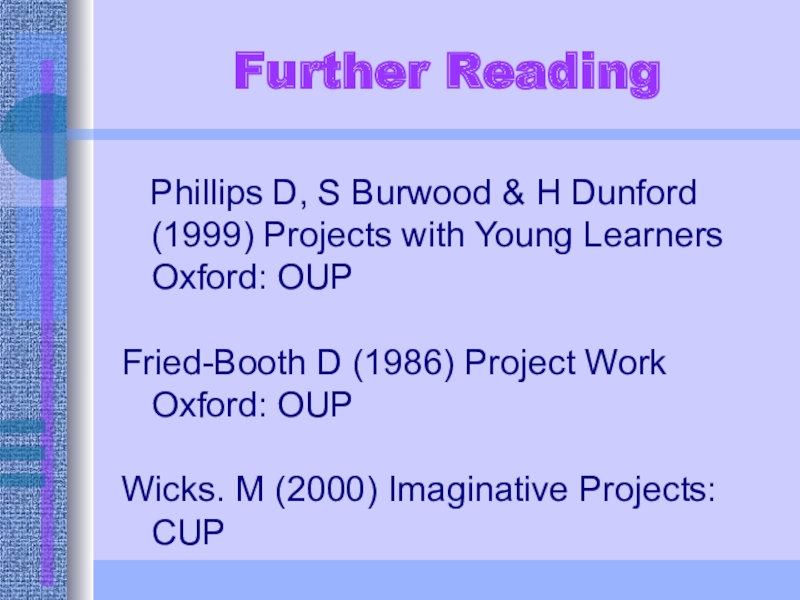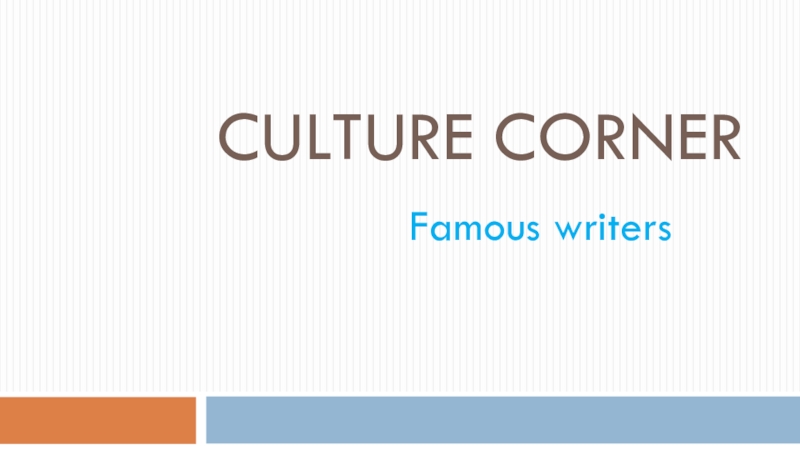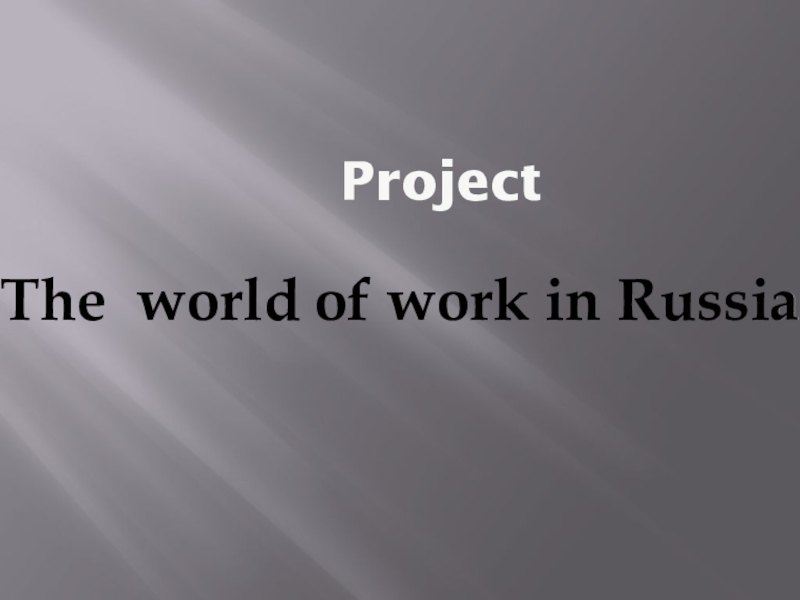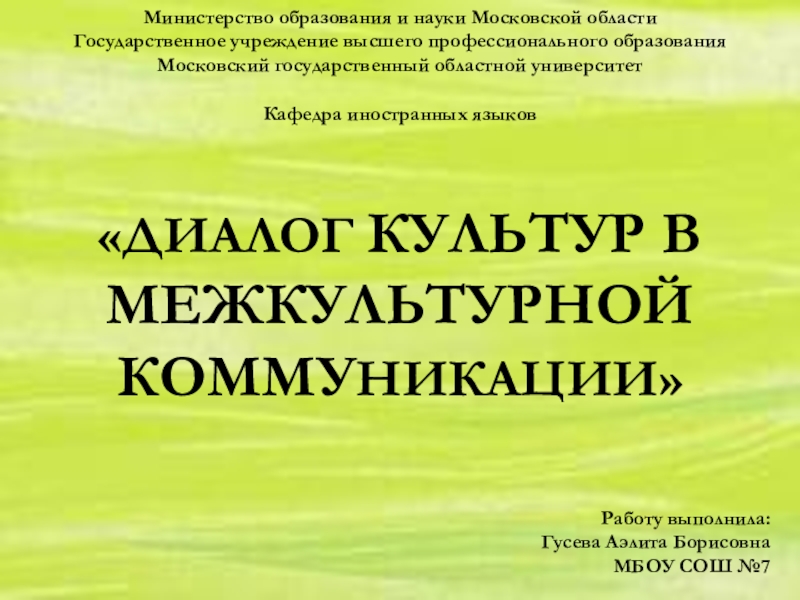Tatiana
School №31
- Главная
- Разное
- Образование
- Спорт
- Естествознание
- Природоведение
- Религиоведение
- Французский язык
- Черчение
- Английский язык
- Астрономия
- Алгебра
- Биология
- География
- Геометрия
- Детские презентации
- Информатика
- История
- Литература
- Математика
- Музыка
- МХК
- Немецкий язык
- ОБЖ
- Обществознание
- Окружающий мир
- Педагогика
- Русский язык
- Технология
- Физика
- Философия
- Химия
- Шаблоны, фоны, картинки для презентаций
- Экология
- Экономика
Презентация, доклад по английскому языку Project work with teenagers
Содержание
- 1. Презентация по английскому языку Project work with teenagers
- 2. What is a project? The best way to
- 3. Project work is becoming an
- 4. A PROJECT INVOLVES STUDENTS IN
- 5. Projects provide creative opportunities for
- 6. Project – 1. A carefully planned piece
- 7. TYPES OF PROJECTSLiterature
- 8. Some advantages of project work are: Increased
- 9. Some advantages of project work are:Interpersonal relations
- 10. Authentic – 1. Done or made in
- 11. Some advantages of project work are: Learners
- 12. Some advantages of project work are:Project develops
- 13. Planning the project Opening Proposing Time
- 14. Some possible drawbacks to project work Learners
- 15. FACTORS STIMULATING STUDENTS ACTIVITYThe topic of the
- 16. FINAL PRODUCTS OF THE PROJECTPower Point presentationsBookletsMapsPostersWall
- 17. Class review and evaluationLooking and reviewing each
- 18. STUDENT’S SELF EVALUATION CARD
- 19. Final stage of the project is reflectionTeacher’s
- 20. MUSIC PROJECT
- 21. MUSIC PROJECT
- 22. POSTERS OF THE GROUPS
- 23. ESSAYS, LETTERS, ARTICLES
- 24. INDIVIDUAL PROJECTS
- 25. FAMOUS PEOPLE PROJECT
- 26. MERRY CHRISTMAS PROJECT
- 27. MERRY CHRISTMAS PROJECT
- 28. Слайд 28
- 29. PROJECT PRESENTATION
- 30. PROJECTS WITH YOUNG LEARNERS
- 31. TOLLERANCE PROJECT
- 32. TOLLERANCE PROJECT
- 33. FAIRY TALES PROJECT
- 34. Remember: all the barriers are
- 35. THANK YOU ! BE GREATIVE !
- 36. ReferencesHaines S (1989) Projects for the EFL
- 37. Further Reading Phillips D, S Burwood
What is a project? The best way to answer this question is to show some examples of projects
Слайд 3 Project work is becoming an increasingly popular feature within
the ELT classroom. Common projects are class magazines, group wall displays about students' countries and designs for cities of the future. A project involves students in deciding together what they want to do to complete a project whilst the teacher plays a more supporting role.
Слайд 4 A PROJECT INVOLVES STUDENTS IN DECIDING TOGETHER WHAT THEY
WANT TO DO TO COMPLETE THE PROJECT, WHILST THE TEACHER PLAYS A MORE SUPPORTING ROLE.
Слайд 5 Projects provide creative opportunities for meaningful language use at
all language levels from primary upwards.
The best types of projects are those which draw on the student’s own experience and world in comparison to another English-speaking country.
The best types of projects are those which draw on the student’s own experience and world in comparison to another English-speaking country.
Слайд 6
Project – 1. A carefully planned piece of work to get
information about something, to build something, to improve something.
2. A part of school or college course that involves careful study of a particular subject over a period of time.
Pearson Longman. New Edition.
Longman Dictionary of
Contemporary English
2. A part of school or college course that involves careful study of a particular subject over a period of time.
Pearson Longman. New Edition.
Longman Dictionary of
Contemporary English
Слайд 7TYPES OF PROJECTS
Literature
Musical
Drama
Ecological
International
Sightseeing
Historical
Geographical
Virtual
Слайд 8Some advantages of project work are:
Increased motivation - learners become
personally involved in the project.
All four skills, reading, writing, listening and speaking, are integrated.
Autonomous learning is promoted as learners become more responsible for their own learning.
There are learning outcomes -learners have an end product.
All four skills, reading, writing, listening and speaking, are integrated.
Autonomous learning is promoted as learners become more responsible for their own learning.
There are learning outcomes -learners have an end product.
Слайд 9Some advantages of project work are:
Interpersonal relations are developed through working
as a group.
Content and methodology can be decided between the learners and the teacher and within the group themselves so it is more learner centered.
Authentic tasks and therefore the language input are more authentic.
Content and methodology can be decided between the learners and the teacher and within the group themselves so it is more learner centered.
Authentic tasks and therefore the language input are more authentic.
Слайд 10Authentic – 1. Done or made in the traditional way
2. A
painting, document, book, etc that is authentic has been proved to be by a particular person
3. Based on facts
4. Used to describe a copy that is the same as or as good as the original
3. Based on facts
4. Used to describe a copy that is the same as or as good as the original
Слайд 11Some advantages of project work are:
Learners often get help from
parents for project work
A break from routine and the chance to do something different.
A context is established which balances the need for fluency and accuracy. Haines (1989)
A break from routine and the chance to do something different.
A context is established which balances the need for fluency and accuracy. Haines (1989)
Слайд 12Some advantages of project work are:
Project develops confidence in using English
in the real world, the world outside the classroom
The opportunity to activate what the Ss know and use in the outside world.
The Ss work on a topic of interest to them
( using language for a specific purpose, with a particular aim in mind )
The Ss take a certain responsibility for their own learning.
Ss centered approach is used.
The opportunity to activate what the Ss know and use in the outside world.
The Ss work on a topic of interest to them
( using language for a specific purpose, with a particular aim in mind )
The Ss take a certain responsibility for their own learning.
Ss centered approach is used.
Слайд 13
Planning the project
Opening
Proposing
Time
Space
Materials and resources
Presentation
Evaluation
Слайд 14Some possible drawbacks to project work
Learners using their own language
Some learners doing nothing
Groups working at different speeds
Problems with discipline
Groups working at different speeds
Problems with discipline
Слайд 15FACTORS STIMULATING STUDENTS ACTIVITY
The topic of the project should be challenging
The
factor of novelty
The factor of variety
Ego-factor (the possibility to the Ss to speak about their plans and ideas, views)
The factor of pleasure
The factor of variety
Ego-factor (the possibility to the Ss to speak about their plans and ideas, views)
The factor of pleasure
Слайд 16FINAL PRODUCTS OF THE PROJECT
Power Point presentations
Booklets
Maps
Posters
Wall newspapers
Films
Reports
Questionnaires
Post cards
Conference
Role play
Concert
Exhibition
Seminar
Round table
Composition
Essay
Albums
Parties
Слайд 17Class review and evaluation
Looking and reviewing each other’s finished work
Selecting the
best examples from the different groups for a wall display
Awarding prizes for best contributions
Giving short presentations about the work different groups have done
Showing a video clip or presenting an audio recording
Presenting a role-play or sketch
Awarding prizes for best contributions
Giving short presentations about the work different groups have done
Showing a video clip or presenting an audio recording
Presenting a role-play or sketch
Слайд 19Final stage of the project is reflection
Teacher’s activity
Recommendations
Summing up the results
Student’s
activity
Analysis and discussion
Evaluation and self evaluation of the Ss and the whole group
Generalization
Analysis and discussion
Evaluation and self evaluation of the Ss and the whole group
Generalization
Слайд 20 MUSIC PROJECT
Make a CD cover
Invent
the band and the names of the band members
Video the interview with the band
Record a song
Write gig reviews
Photo shoot of the band
Design a poster advertising gigs
Video the interview with the band
Record a song
Write gig reviews
Photo shoot of the band
Design a poster advertising gigs
Слайд 36
References
Haines S (1989) Projects for the EFL classroom
London: Nelson
Diana L. Fried-Booth.
Project work.
Diane Phillips, Sarah Burwood &
Helen Dunford. Projects with young
Learners.
Lynn Gallacher. Project work with teenagers.
Diane Phillips, Sarah Burwood &
Helen Dunford. Projects with young
Learners.
Lynn Gallacher. Project work with teenagers.
Слайд 37Further Reading
Phillips D, S Burwood & H Dunford (1999)
Projects with Young Learners Oxford: OUP
Fried-Booth D (1986) Project Work Oxford: OUP
Wicks. M (2000) Imaginative Projects: CUP
Fried-Booth D (1986) Project Work Oxford: OUP
Wicks. M (2000) Imaginative Projects: CUP
